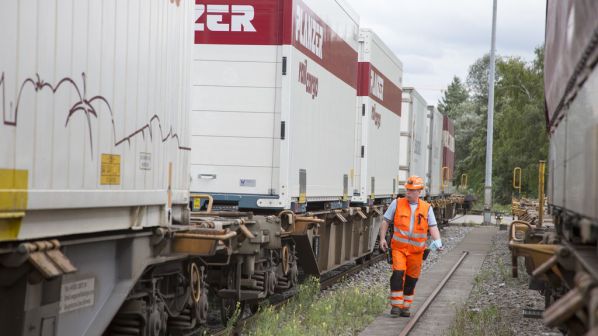The company has equipped around 100 freight wagons and 25 locomotives with automatic couplers over the past year. The fleet entered regular service at the beginning of May on combined transport routes carrying containers between the hub at Dottikon and terminals in Dietikon, Oensingen, Renens, Cadenazzo and Lugano Vedeggio as well as to Biasca and Mendrisio.
The new automatic couplers installed for the pilot are helping to accelerate and improve the safety of shunting. Wagons and locomotives are automatically coupled together without risk of injury to shunting workers, and to separate the wagons, only a single operation is needed, eliminating time-consuming, labour and cost-intensive work.
The cost of converting the rolling stock is around SFr 15m ($US 14.9m), with the Swiss federal government contributing about SFr 9m. This subsidy is granted under the Goods Carriage Act for giving financial support for innovations in rail freight traffic to promote sustainable development.
Mr Peter Füglistaler, director of the Federal Office of Transport (FOT), praised SBB Cargo’s pioneering spirit at a press conference on May 14, but pointed out that this innovation drive can only achieve its full effect if other stakeholders such as private wagon owners also take part. “This is essential if rail freight traffic is to be able to meet the increasing requirements of the freight industry and logistics,” Füglistaler says.
Automatic braking
SBB Cargo is also working to develop automatic braking technology, which has been installed on the wagons fitted with the automatic coupler. Partners here include Voith, PJM and VTG and two rail freight operators, Rail Cargo Austria and Mercitalia.
The manual brake test takes a 500-metre-long train up to 40 minutes today, while the automated test takes just 10 minutes. Intensive testing will take place over the next year and the technology is expected to enter operation in spring 2020. SBB Cargo is also testing a collision warning system on shunting locomotives using a remote-control system with visual and acoustic signals.
Mr Nicholas Perrin, CEO of SBB Cargo, emphasised that the company is looking to find solutions not only in Switzerland but on a European scale in order to meet the demands of the changing logistics market. He says SBB Cargo is aiming to play a pioneering role in modernisation, which is urgently needed in the face of the competition from road transport.
Automatic coupling can also tackle upcoming problems with a shortage of skilled shunting staff - just one staff member is required instead of two - with many workers due to retire in the next few years and few candidates to fill vacancies.

